- Reduce disturbance to the soil
- Maintain cover on soil
- Living Roots and Biodiversity
- Other Options (operation dependent): Based on your growing situation, you might be able to include these regenerative agriculture options in your program.
a. Livestock integration
b. Organic inputs
Regenerative Agriculture:
Our Impact and Vision
“Our mission is to create sustainable microalgae products and solutions that enhance soil, plant, animal, and human health.”
Heliae® Agriculture’s mission, formulated at that start of our company in 2008, has guided our team in creating effective, sustainable, and regenerative products for growers around the world.
Our vision (to support our growers in their sustainable and regenerative agriculture efforts and help them on their path towards improving soil health and quality on their farm), has also been a guiding voice in our efforts to enhance the health of the soil, plants, animals, and humans.
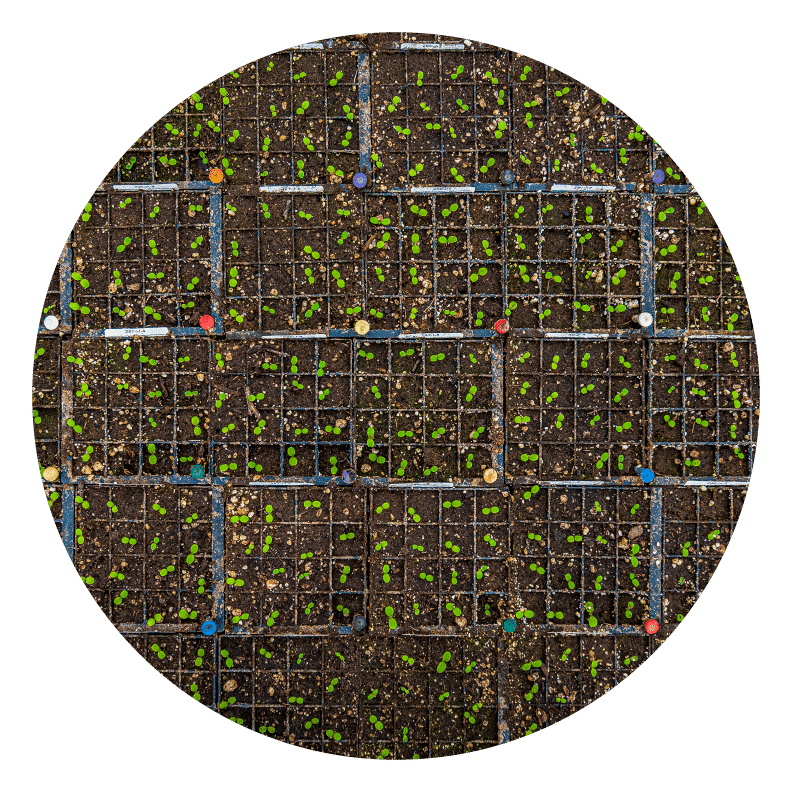
Products That Pave the Path to Regeneration
Our unique, proprietary PhycoTerra® and PhycoTerra® Organic products have shown improvements in soil quality AND increases in crop yield and quality, representing a win/win for everybody. Our R & D staff have a long history of lab, greenhouse, and field trials to better understand how our product portfolio works. This deeper level of understanding allows us to
- provide value to a grower in terms of yield and return on investment,
- elucidate the direct impact the PhycoTerra® line has on improving the soil microbiome, and
- how these changes belowground relate to improve soil structure and water holding capacity.
We currently have two Ph.D. level scientists overseeing our multi-faceted approach to understanding how the PhycoTerra® product line brings value to farms and impacts current regenerative agriculture efforts. Furthermore, our leadership team is consistently engaged with thought leaders in regenerative agriculture to raise awareness of how the PhycoTerra® line brings value to the global food supply chain.
The results are clear, adding PhycoTerra® or PhycoTerra® Organic to your current operation can bring a regenerative dimension that can impact your soil quality immediately across a variety of crops.
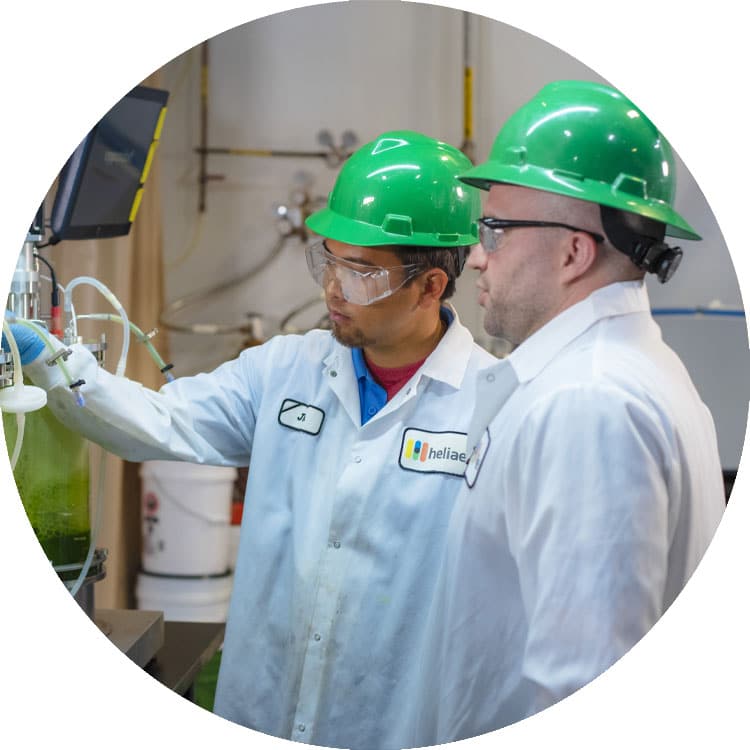
In addition to testing and researching our current product line, the R & D team at Heliae have an eye on the future and has several exciting products in the development pipeline. Our goal is to provide a variety of regenerative agriculture solutions and to meet the grower where a sustainable solution is needed most.
Our future developments go through the same rigorous testing protocols across our laboratory, greenhouse, and field trial platforms to ensure reliable performance in crop response and consistency in formulation.
Heliae® Ag is continuously striving, through innovative methods, to create solutions to the sustainability challenges that growers face. Keep an eye on Heliae® Ag for new developments to our PhycoTerra® and where we might fit in your regenerative agriculture efforts.
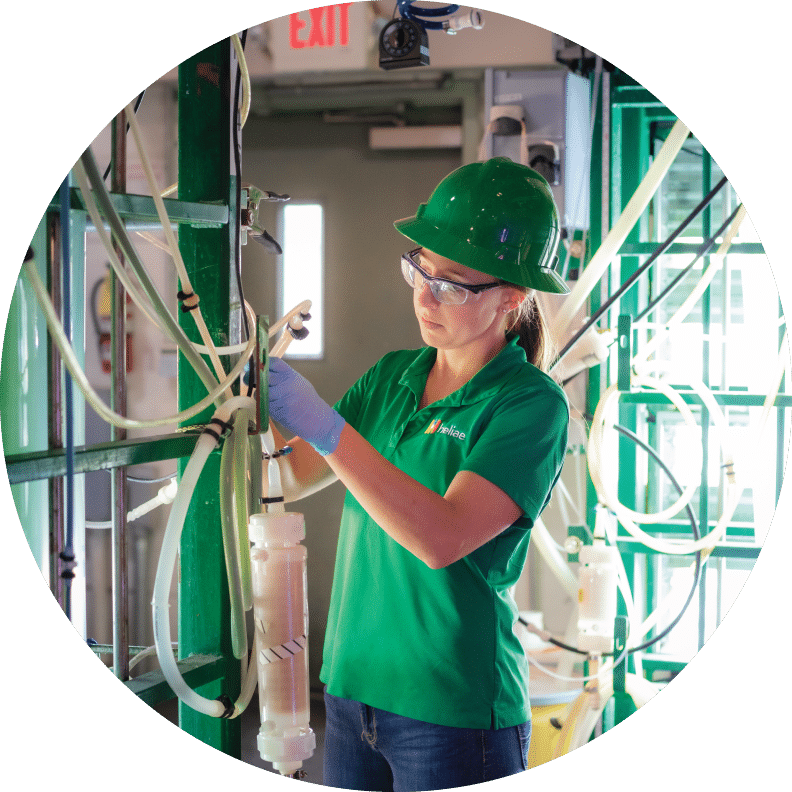
Regenerative vs. Sustainable Agriculture
Sustainable this… Sustainable that… Sustainable agriculture? Huh? You often hear these terms thrown around, but what do they mean? Perhaps an expert opinion is needed here to get some clarification. The University of California Davis – Agriculture Sustainability Institute describes the primary goal of sustainable agriculture as “The goal of sustainable agriculture is to meet society’s food and textile needs in the present without compromising the ability of future generations to meet their own needs.” In this sense, a sustainable agriculture system is not extractive – drawing down current fresh water, fertilizer, and arable land stocks, rendering them lost to future generations.
How does one think more sustainably? Broadly speaking, a sustainable lens can be used to look at a variety of issues in agriculture. For example, some folks study the sustainability of our agriculture water supply, energy use, safe access to food, and even phosphorus fertilizer supply chains. According to the Agriculture Sustainability Institute at UC Davis – “Practitioners of sustainable agriculture seek to integrate three main objectives into their work: a healthy environment, economic profitability, and social and economic equity. Every person involved in the food system—growers, food processors, distributors, retailers, consumers, and waste managers—can play a role in ensuring a sustainable agricultural system.”
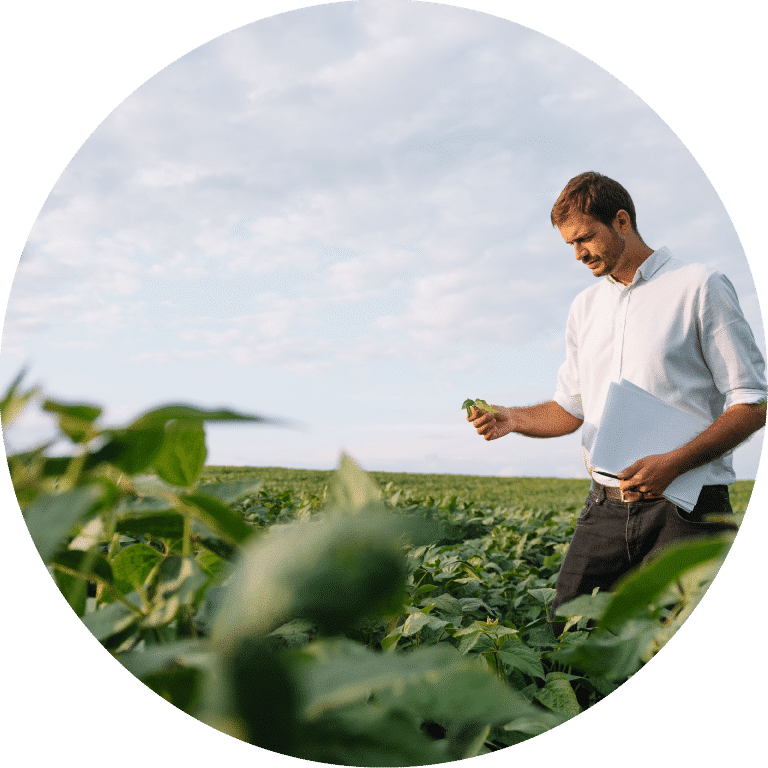
10 Regenerative Agriculture Practices
The application of sustainability principles plays out across multiple issues in our food supply chain, providing space for specific improvements at each step along the way. Furthermore, the different stakeholders involved in the food supply can readily adopt measures and viewpoints that improve the localized sustainability of their specific industry.
Uniquely, a subset of sustainability measures that a grower can readily deploy on the farm relate to the concept of regenerative agriculture and building soil health and quality. In this sense, regenerative agricultural principles bring the sustainability lens to farm management practices and give the grower specific actions to take to improve their soil. Thus, sustainable AND regenerative agriculture practices go hand in hand with one another.
Become a leader in both sustainability and regenerative agriculture by following our “10 Regenerative Agriculture Practices Every Grower Should Follow” tips.
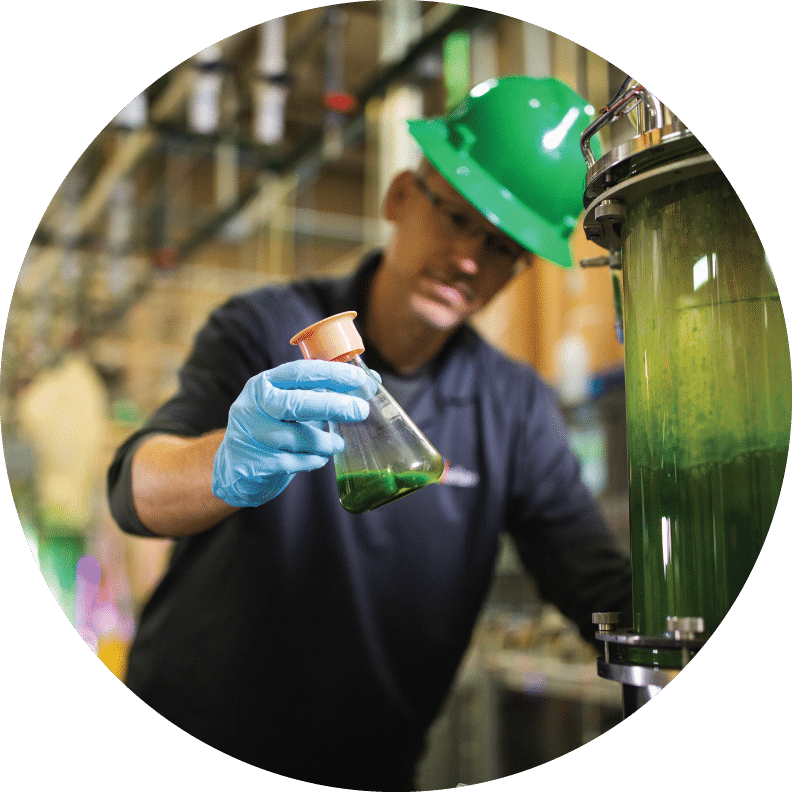
Regenerative Agriculture
Core regenerative agricultural principles include:
Heliae’s Progress Towards a Future That Incorporates Both
Every year brings new challenges to a growing operation. One year it might be drought, the next year flooding, a regional labor shortage, or even a global trade war. Some years even bring more than one challenge, all in one go! No matter the issue, Heliae® Agriculture is there to help our growers produce an abundance of food, fuel, and fiber enjoyed across the globe.
Heliae® Ag is committed to creating a sustainable future where our arable soils are preserved for future generations and also improved upon by regenerative farming practices. By committing to a sustainable and regenerative future, Heliae® Ag recognizes the connection between improving the soils and conserving other natural resources such as fresh water, energy, and mined fertilizer deposits (e.g., phosphate and potassium ore bodies).
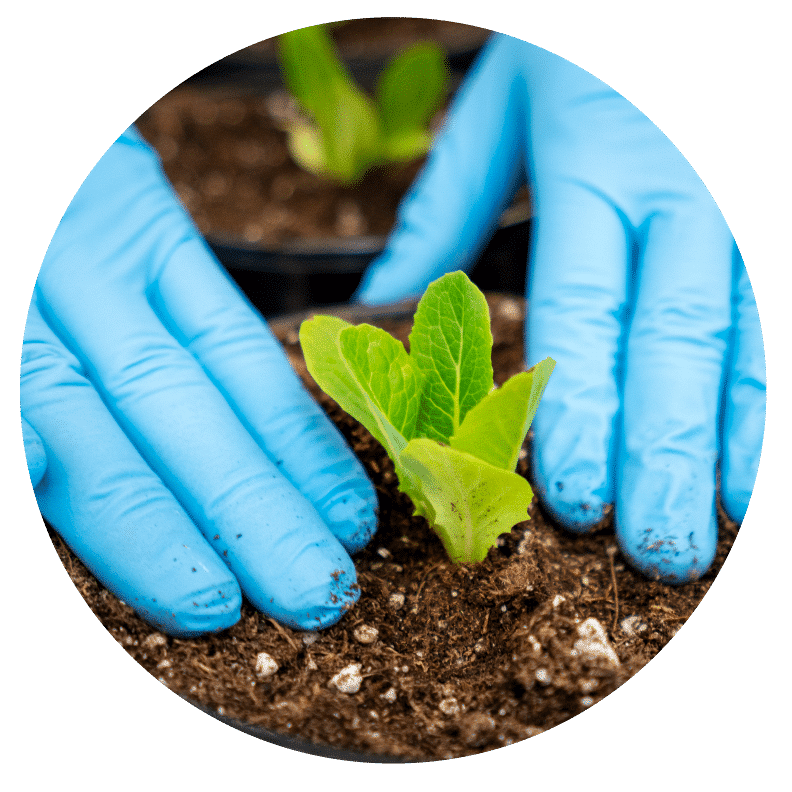
Working With Our Growers
Our Commitment to Growers
We are strongly committed to working with our growers to help them achieve their on-farm regenerative agriculture goals and driving a win/win situation for all involved. Our multi-faceted trial, laboratory, greenhouse, and on-farm field research results support our claims that using PhycoTerra® can be a highly effective, cost-conscious approach to promoting the sustainable intensification of agriculture needed to support a growing population while also regenerating the soil along the way.
Simply put, the grower sees an improvement in soil quality and may even see an increase to their bottom-line profitability, and the public can rest assured that critical natural resources are not being used in an unsustainable manner. When a grower can grow a crop using less water, fuel, and fertilizer inputs, we all benefit from the increase in efficiency and less excess or waste in the system overall.
Principles of Regenerative Agriculture
As you might expect, the regenerative agriculture model comes in several different flavors (Rodale Institute, General Mills, and Washington State University), that can be deployed based on specific growing situation and logistics. These different ‘flavors’ include both conventional and organic growing methods, integrating (or not integrating) animals into grazing rotations, and keeping the soil covered either with a cash crop or cover crop. These different regenerative agricultural soil health viewpoints can be adapted to meet local operational needs.
Our work at Heliae® Ag shows that the PhycoTerra® product line is highly complementary to the core principles of regenerative agriculture outlined above. At Heliae® Ag, we focus on improving the interface between the soil microbial community (e.g., bacteria and fungi) and its physical aspects (e.g., soil structure and water holding capacity).
Our trials show an improvement in both soil microbial abundance and diversity, which is quickly followed by increased soil aggregation and water holding capacity. By improving these two spheres of influence on plant growth, we are better able to support crop growth and development. For more information on how Heliae® Ag can help you get started with regenerative agriculture, click here.
Our list of universal conservation principles that lay the foundation of modern regenerative agriculture practices:
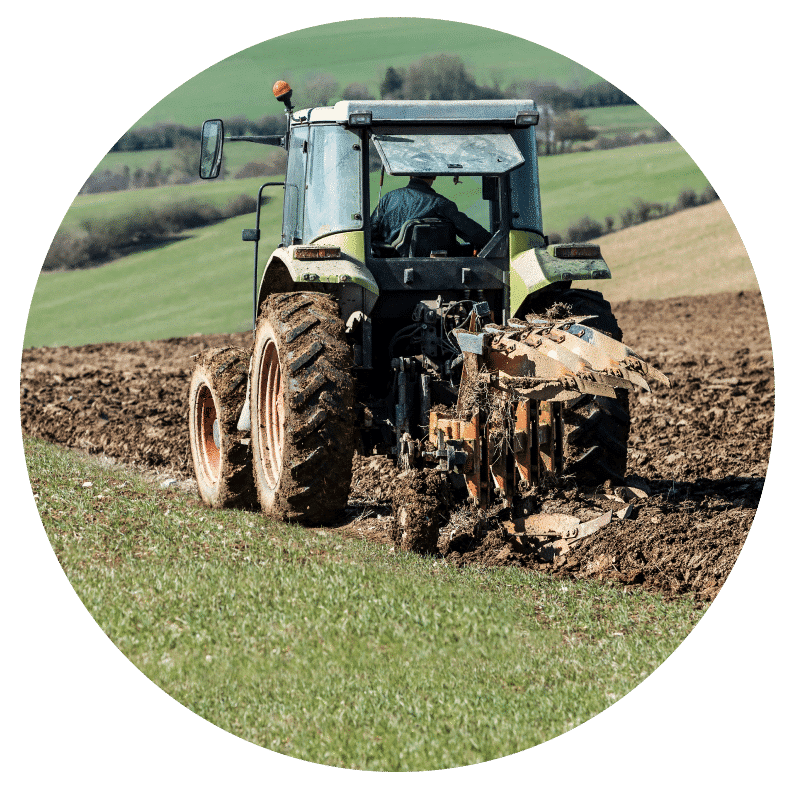
Universal Conservation Principles
#1 - Reduce Disturbance to the Soil
This idea has been around for some time and is historically linked to conservation tillage practices. While tillage and fieldwork will continue to be key tools in agricultural production, there is increasing recognition that growers were leaning on their field iron a bit too much in the past, and this can negatively impact soil quality and make a field more prone to erosion.
With regards to the regenerative agriculture strategy, reduced tillage, or even a no-tillage program, will help keep soil in place and on the field where it belongs. Keeping soil on the field is critical to rebuilding and regenerating soil quality at the farm level.
Another key reason for reducing tillage is to maintain soil structure and the benefits of aggregated soil, such as improved water holding capacity and infiltration rates. Excessive tillage will slice apart soil aggregates, further reducing soil structure, which can make a field prone to erosion. Slicing and crushing soil aggregates also release carbon into the atmosphere, causing a net drawn down of your soil carbon, which can cause issues with nutrient exchange and water storage.
#2 - Maintain Cover on Soil
Covering your soil can be done in a couple of ways, but the end goal is the same: a covered soil can resist wind and water erosion as the impact of those physical forces is reduced significantly on the farm. For example, a covered soil is no longer exposed to the full power of a falling raindrop, which can beat up the soil and cause a loss in structure and could also drive erosion and runoff.
The same is true for wind erosion. Keeping the soil covered will cause more surface roughness, which decreases the erosive potential of a wind gust as it moves across your field. You can hide the soil in a few ways:
- Plant cover crops and cash crops on the field year-round and/or
- Keep the field covered in crop residue between crops.
Crop residue is an umbrella term for the “trash” that is left over after harvest and is key for keeping the soil covered when maintaining living plants is not feasible.
#3 - Living Roots and Biodiversity
Living plant roots are key to the success of any crop. A good root system keeps the plant anchored to the soil and helps absorb water and nutrients to fuel aboveground growth. One aspect of plant roots that are just starting to be understood is their role in maintaining microbial communities belowground.
In this sense, plants ‘feed’ the soil microbiome (bacteria and fungi) with carbon molecules called root exudates. There is a strong connection between healthy soil microbiome and living roots. When a field is left fallow and bare, the microbial populations suffer as they no longer receive root exudates to sustain their population. Root exudates are secreted by living roots, and these exudates can come from the cash crop and/or cover crop. Furthermore, diverse forms of root exudates can also help support regenerative efforts and healthy soil microbes, and this can be achieved by crop rotation and multi-species cover crop mixes.
#4 - Operation Dependent Options
Based on your growing situation, you might be able to include these regenerative agriculture options in your program.
Livestock integration – Some growers have had success using livestock as a key component in their regenerative agriculture campaign. Adding livestock can help bring a different income stream to a farm, which can improve overall profitability and also consume excess crop residue and cover crops while they are on the field. As a bonus, the waste streams from the livestock can help return nutrients to the field and enrich the soil. This is not a viable option for all growers, however, especially those involved with the production of crops consumed by humans (e.g., leafy vegetables, nuts that are swept off the ground, etc.).
Organic inputs – Some growers insist that all inputs to a farm must be organically certified, but this is not always an option. If you prefer organic inputs, feel free to integrate them into your regenerative program!
Regenerative Agriculture Pros and Cons
The regenerative agriculture model offers tremendous upside for a grower in terms of improving the soil quality and water storage capacity of their fields at the local level. For example, imagine the year to year reliance of your crop, even under drought conditions, if your soil is primed to store soil moisture. Other benefits include a possible decrease in fuel use and implement wear and tear as they transition to a reduced or no-till type system. Furthermore, improved soil conditions can help support crop yield and quality goals that can quickly bring value to a grower’s bottom line.
One aspect of the regenerative model is that the core principles scale easily. A small plot grower can commit to a holistic field management program, using the same core principles listed previously, and enjoy similar soil conservation benefits as a grower who is farming thousands of acres. Big or small, there is room to employ regenerative agriculture soil health methods on your farm today.
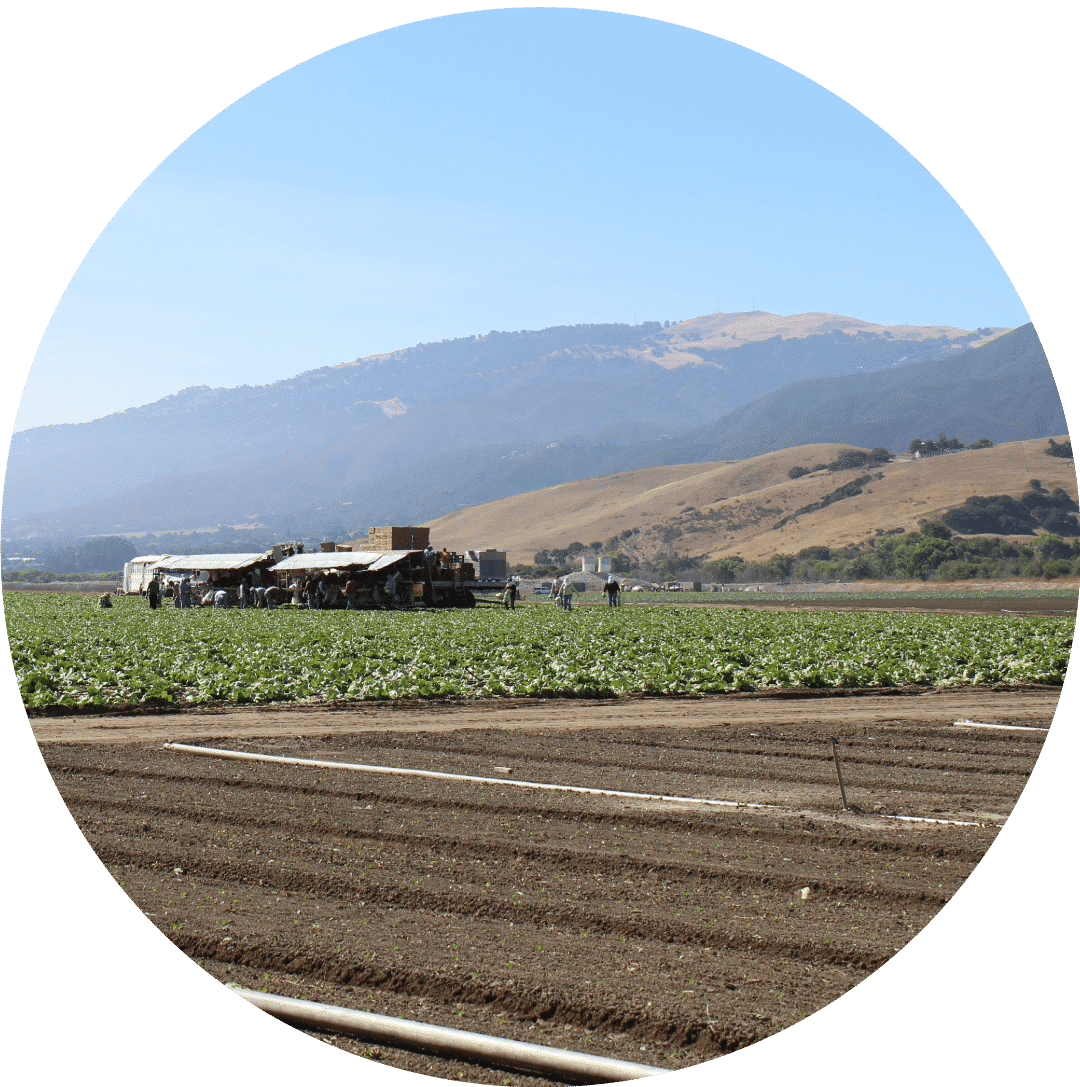
Pros of Regenerative Agriculture
On a larger scale, a ‘pro’ for using a regenerative agriculture approach on your farm is the environmental benefits that everybody enjoys when an individual grower commits to a different field management system. Studies show that regenerative agriculture, due to the measurable increase in soil quality, can help reduce local nutrient pollution due to a decrease in wind and water erosion. For example, nitrogen and phosphate help promote consistent crop yields and are a critical grower tool in our food supply chain; however, when these nutrients enter local bodies of water, it can lead to widespread fish kills and toxic algae blooms. Promoting soil quality and keeping soil on the farm benefits the grower but also keeps our waterways and air clean.
Another large-scale “pro” for regenerative agriculture is the carbon sequestration potential of soils. Carbon sequestration occurs when a plant, in this case, the farm or pasture crop, pulls carbon dioxide out of the air and, and through a series of belowground ecosystem processes, the carbon becomes ‘trapped’ in the soil. This kind of carbon is now locked in place, or sequestered, resulting in a net drawn down in atmospheric carbon dioxide concentrations over time. Under this system, atmospheric carbon is reduced, and soil carbon is increased as a result. Society benefits from greenhouse gas mitigation, and the grower gets the benefit from enhanced soil quality, which is strongly influenced by the carbon content of the soil. For example, essential soil properties such as the ability to store and exchange nutrients, hold water, and provide structure, are all positively correlated with increased soil content. It’s clear that regenerative agriculture benefits all members of society and is considered a win/win.
Deploying a regenerative agriculture program on your small plot or large farm requires a good understanding of what management changes need to occur to start down the road of restoring your soil to its full potential. By following the core principles listed above, one can be sure to design a regenerative agriculture program that benefits your farm system and is scalable and reasonable considering your own logistics. Some folks choose to start small with one or two fields; some dive into regenerative agriculture at full steam. The regenerative agriculture model can be tailored to your needs and move at your desired pace of change. You won’t be able to benefit from a regenerative agriculture soil health program until you’ve started!
Regenerative Products Impact Small Farmers, Cooperative Farmers, Commercial Farmers & Backyard Gardeners
As you might expect, the regenerative agriculture model comes in several different flavors (Rodale Institute, General Mills, and Washington State University), that can be deployed based on specific growing situation and logistics. These different ‘flavors’ include both conventional and organic growing methods, integrating (or not integrating) animals into grazing rotations, and keeping the soil covered either with a cash crop or cover crop. These different regenerative agricultural soil health viewpoints can be adapted to meet local operational needs.
Regardless of the farm size or crop, Heliae® Ag is committed to bringing regenerative agriculture solutions with our PhycoTerra® line of products. Our proprietary line of microalgae technology is a proven winner in the field and has been shown to improve soil quality repeatably and is an excellent complement to any regenerative agriculture program. Our trials and grower testimonials also support an improvement in yield, which is sure to add to the bottom line of any sized operation. Contact us to launch our partnership and to learn more about regenerative agriculture products and solutions, its relation to soil health, and its connection to sustainability.
Our list of universal conservation principles that lay the foundation of modern regenerative agriculture practices:
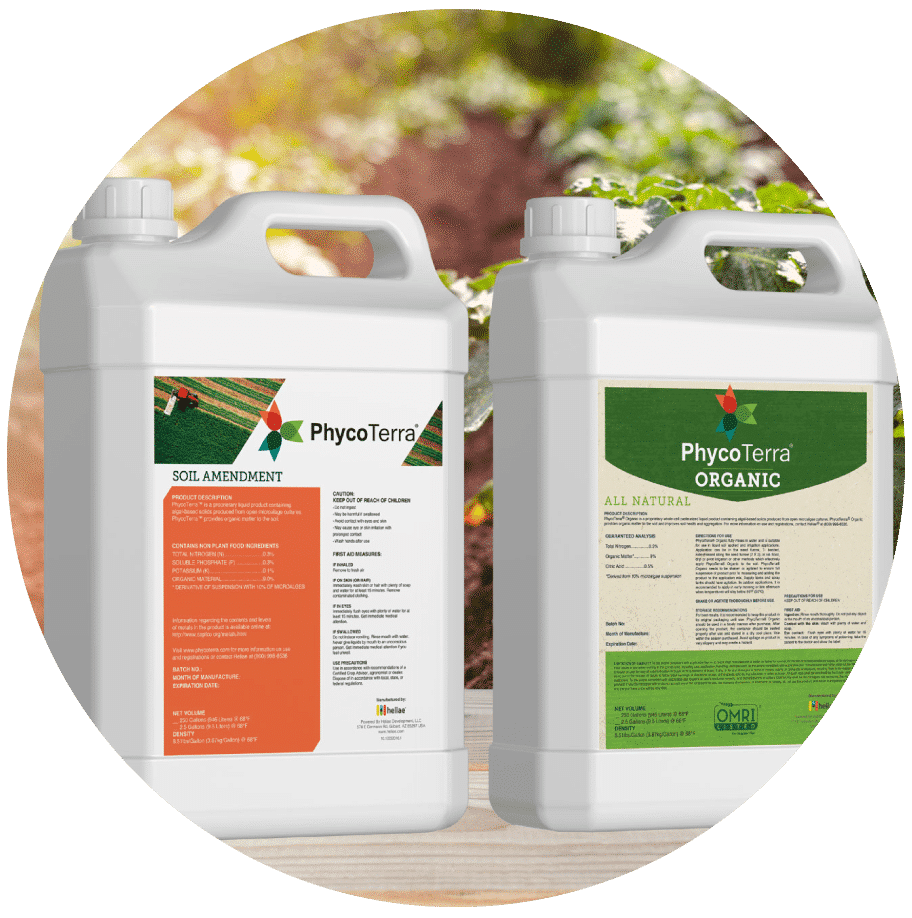
Universal Conservation Principles
Small Plot Growers
Small plot growers can quickly employ small farming regenerative agriculture methods as they typically do not require extensive equipment for their operations and can avoid excessive soil disturbance. Small plot growers can also mix and match their cash crop types and cover crops because they are often not using specialized harvesting equipment such as combines, cotton pickers, tree nut shakers, alfalfa swathers, etc.
Large Farms
Larger farms, due to their field size and reliance on equipment, require more planning to incorporate crop mixes and tillage reduction practices into the fold, but it can be done. More and more large growers are seeing the benefit of regenerative agriculture practices and have embraced the planning and implementation aspect head-on.


